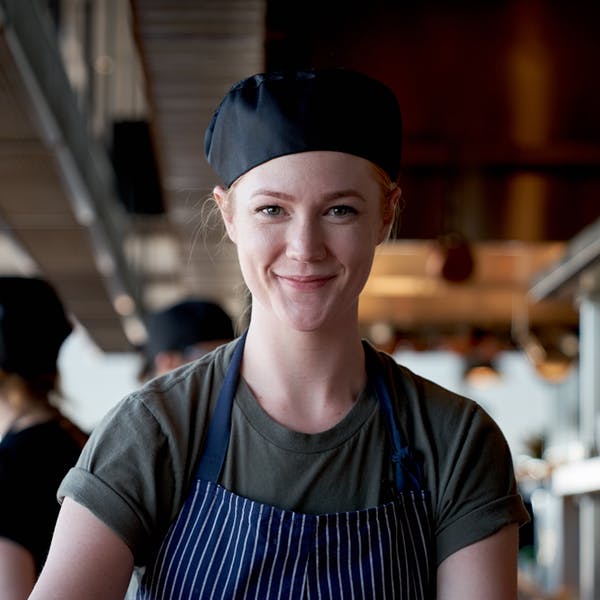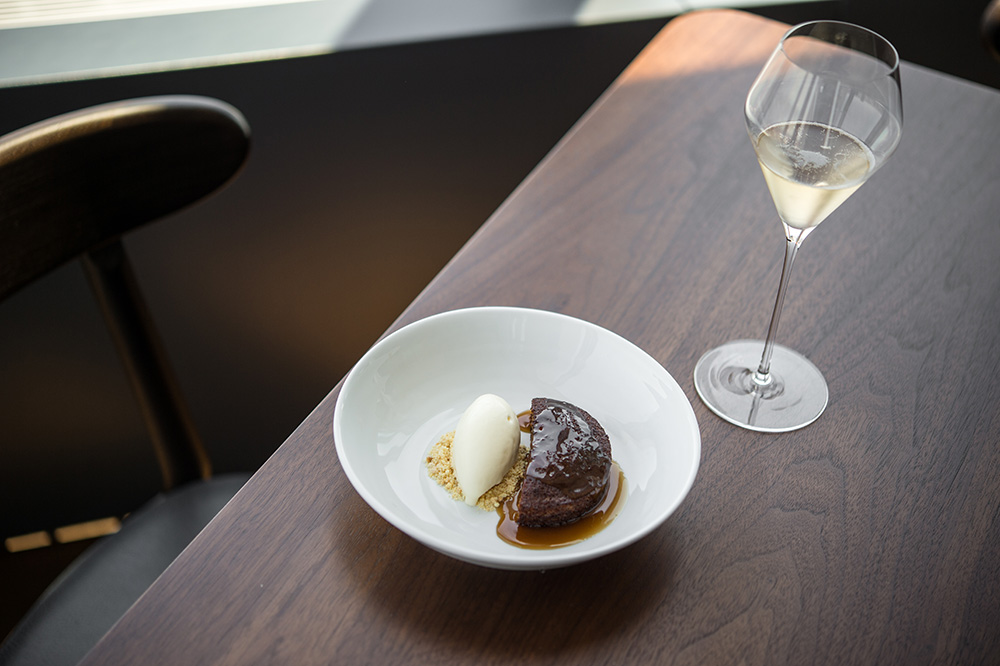Emma Alden was that kid who always loved to bake. As a preteen, she saved up all her babysitting money to buy a KitchenAid stand mixer: “I knew that was the only way to get things done quickly and correctly,” she laughs. The born and raised New Yorker was happiest hanging out in her parents’ kitchen, which evidently led her to a career in kitchens.
Emma concluded that academia wasn’t for her after a short foray into college — she missed working with her hands and the aspect of “being part of something bigger than yourself,” that working in restaurants and bars afforded. So she left college to enroll in Pastry & Baking Arts at the Institute of Culinary Education.
“It was a really quick decision that obviously paid off in the long run,” Emma says. “I'm glad I didn't finish college because paying off student loans on a pastry cook’s hourly income would be nearly impossible. I have no regrets on that one.”
Family pressure to get a college degree aside, Emma graduated from ICE with a diploma at 18 years old, eager to jump into the restaurant workforce to continue to learn and grow. “I’m really happy that I ended up doing something for me,” she says. “It’s nice to get a start when you can afford the whole earning $7-per-hour-in-exchange-for-knowledge thing when you’re young and scrappy.”

Emma completed her externship at Betony, a highly acclaimed restaurant in Midtown Manhattan that has since closed, pairing macarons, mixing brioche dough and taking on other odd pastry jobs a few afternoons a week to practice the skills she learned in school. Adding an impressive restaurant name to her resume helped open doors when it came to getting a pastry cook job.
“I was young and naive enough to do my externship at a two-Michelin-starred restaurant that had never had an extern before,” she says. There, she “fell in love with the idea of plated desserts” and “the incredibly intense fine-dining environment.” A start in restaurants kept her in restaurants, never bakeries or catering. “I loved the idea of service and the restaurant world and how you can do a little bit of everything every day, instead of just one thing over and over again.”
After restaurant life clicked for Emma, she took her first pastry chef position at Batard in Tribeca. “It was the perfect first step in management and creative development because it was such a small and intimate restaurant,” she says. Only eight people worked in the kitchen, offering Emma space to bounce ideas around — especially since she was there up to 80 hours weekly, as the sole chef and cook responsible for Batard’s dessert menu six dinners a week. The small kitchen’s supportive environment allowed Emma to experiment and find her voice in pastry.
“You can be so creative. There are so many things you can do in pastry arts, but I think having a foundation of really good recipes really helps,” she says. “You can think of a million things, but if you don’t have the recipes or the knowledge of how to use certain ingredients, it’s hard to think of what you want and have it come out the way you want.” She says that all recipes are derivative, tweaked from other ideas that make sense of the precise, scientific nature of pastry. “It’s interesting to see why and how a recipe works and then be able to manipulate it to be exactly what you’re going for.”
The skills and stamina Emma built up at Batard — from building a prep list to thinking critically about cuisine — led her to Paris to work with her boyfriend at the time, who was consulting on a New Orleans-themed restaurant. The idea of representing American pastry in a foreign country (especially a country known for its pastries), fascinated Emma, who turned concepts like an Arnold Palmer into desserts that, yes, resulted in questions like: Who is Arnold?
This new perspective on American cuisine from a foreign lens, however, armed Emma with the inspiration she’d need as the pastry chef at Manhatta, “an amazing beast of a restaurant,” as she calls it, 60 floors up at the very southern tip of Manhattan. At the Union Square Hospitality Group establishment, Emma works with a team of two sous chefs and 10 cooks, an army of 12 women she collaborates with daily. She’s learned to delegate, trust and communicate, a new set of skills beyond the execution of dessert ideas. She’s determined to be in the kitchen and bake and hang out every day, ensuring her team is having a good time, learning and growing. “I always have flour on my face,” she laughs.

Manhatta tries to channel New York City through its menu, inspired by the view of the skyline guests enjoy while dining in the opulent space. Emma has found two ways to translate New York City into her desserts: either by remaking iconic local dishes, like a classic cheesecake (currently served with chamomile frozen yogurt and seasonal stonefruit) or a cheese plate served with a pretzel roll, or by using hyper-local products. One or two of the four times a week the restaurant’s purchaser goes to the Greenmarket, Emma will go along to see how she can translate seasonal produce into a dessert dish. “It feels really good to know that we’re using strawberries from 15 miles away or honey from a small apiary, and we’re supporting people who continue to make good in this harsh environment.”
Because Manhatta exclusively offers a three-course, prix-fixe menu, Emma knows all guests will be selecting a dessert. She’s eager to please diners who are accessible via the restaurant’s open kitchen. “I genuinely love the guest interaction, the feeling of guests being mesmerized by what we do and overhearing them talk about the food,” she says. “Having that guest connection really propels me to hold myself and my team to the highest standards.”
While windows in both the pastry and service kitchens are an aesthetic perk, the light allows the team to grow herbs and flowers in-house and Emma says they are “continually inspired by the city that [they] spend all day looking over.”
Start your creative path in Pastry & Baking Arts.




